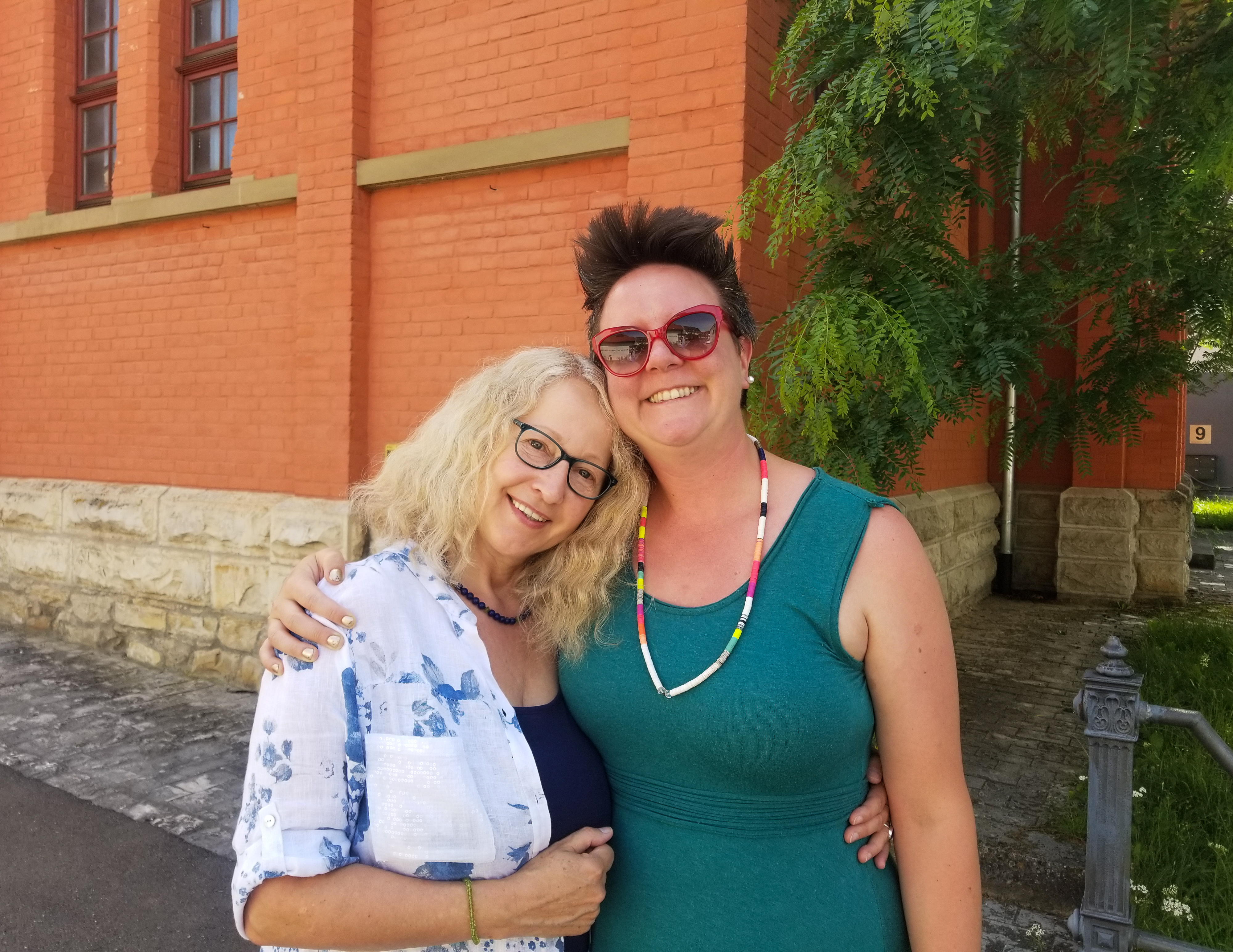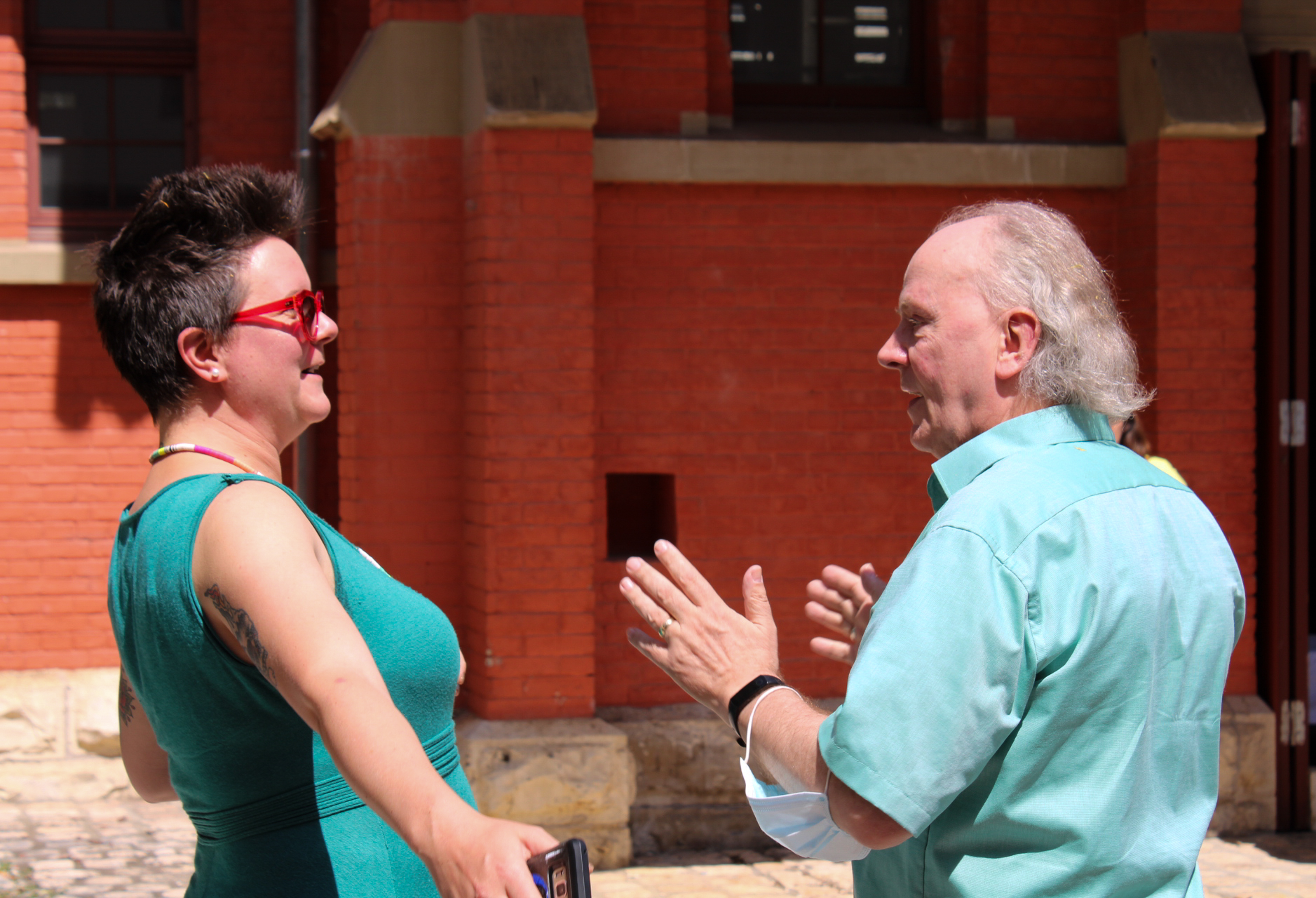

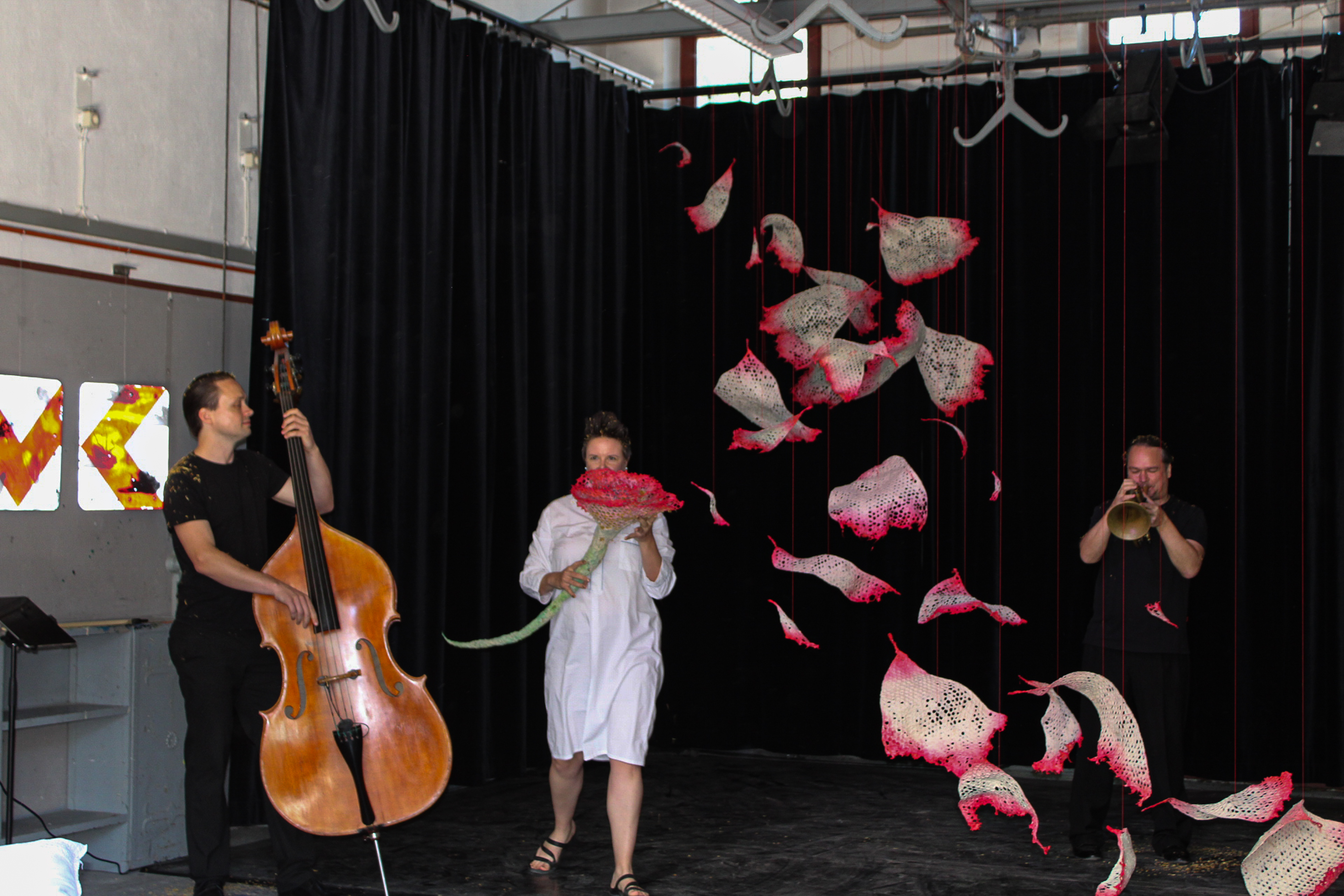







The artist is awakened by a heartbeat on a bed in the Hall and discovers a cornucopia full of pollen (dried marigold blossoms). The bass and trumpet build seperately until lines from a poem are recited and the musicians are both pollinated. The artist turns and faces the audience, the next patch of flowers awaiting pollination. The musicians play in unison while the audience is awakened through pollination. Once they have received pollen, the artist tucks the füllhorn into bed and more lines from the chosen poetry play the performers off the stage.


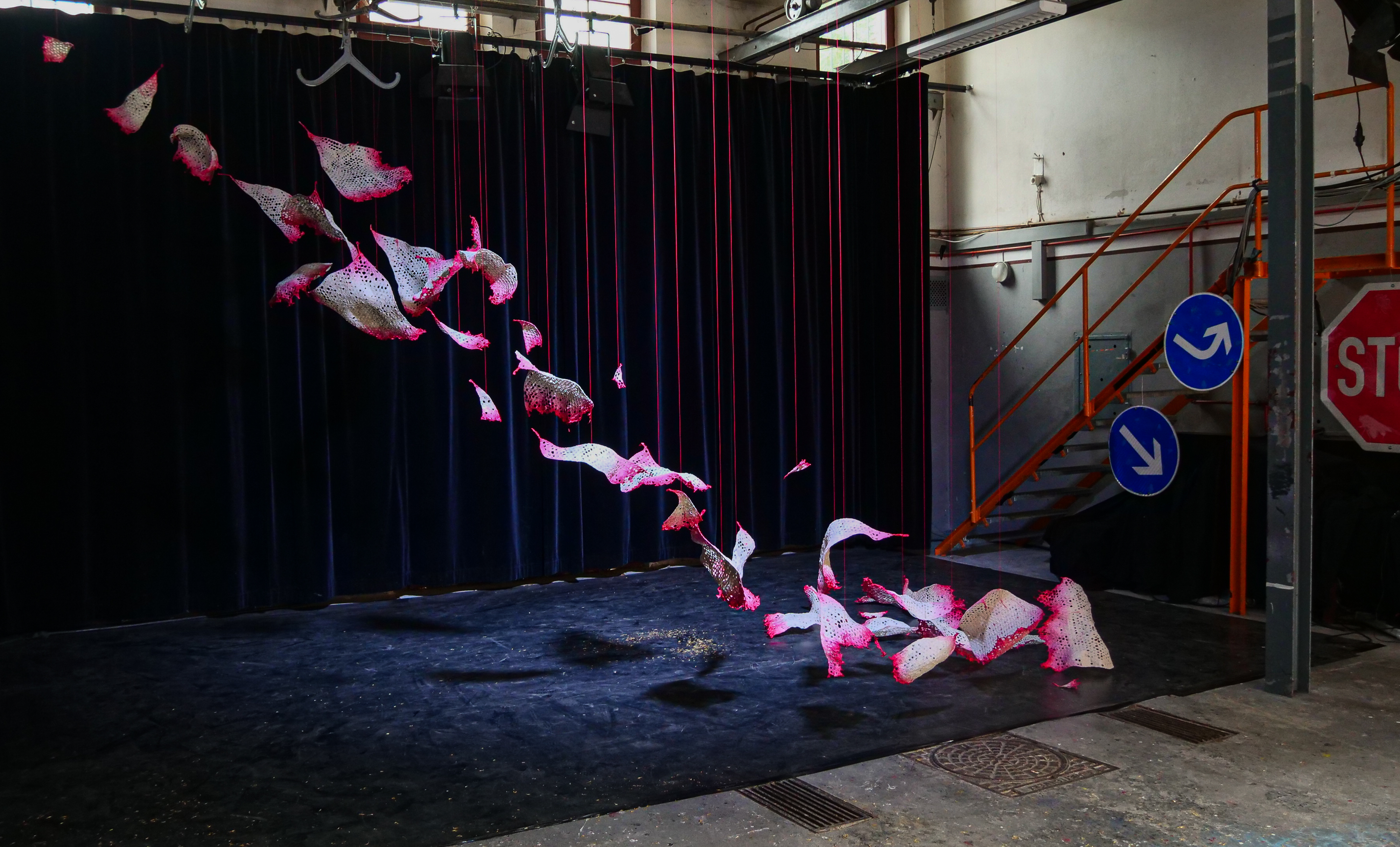









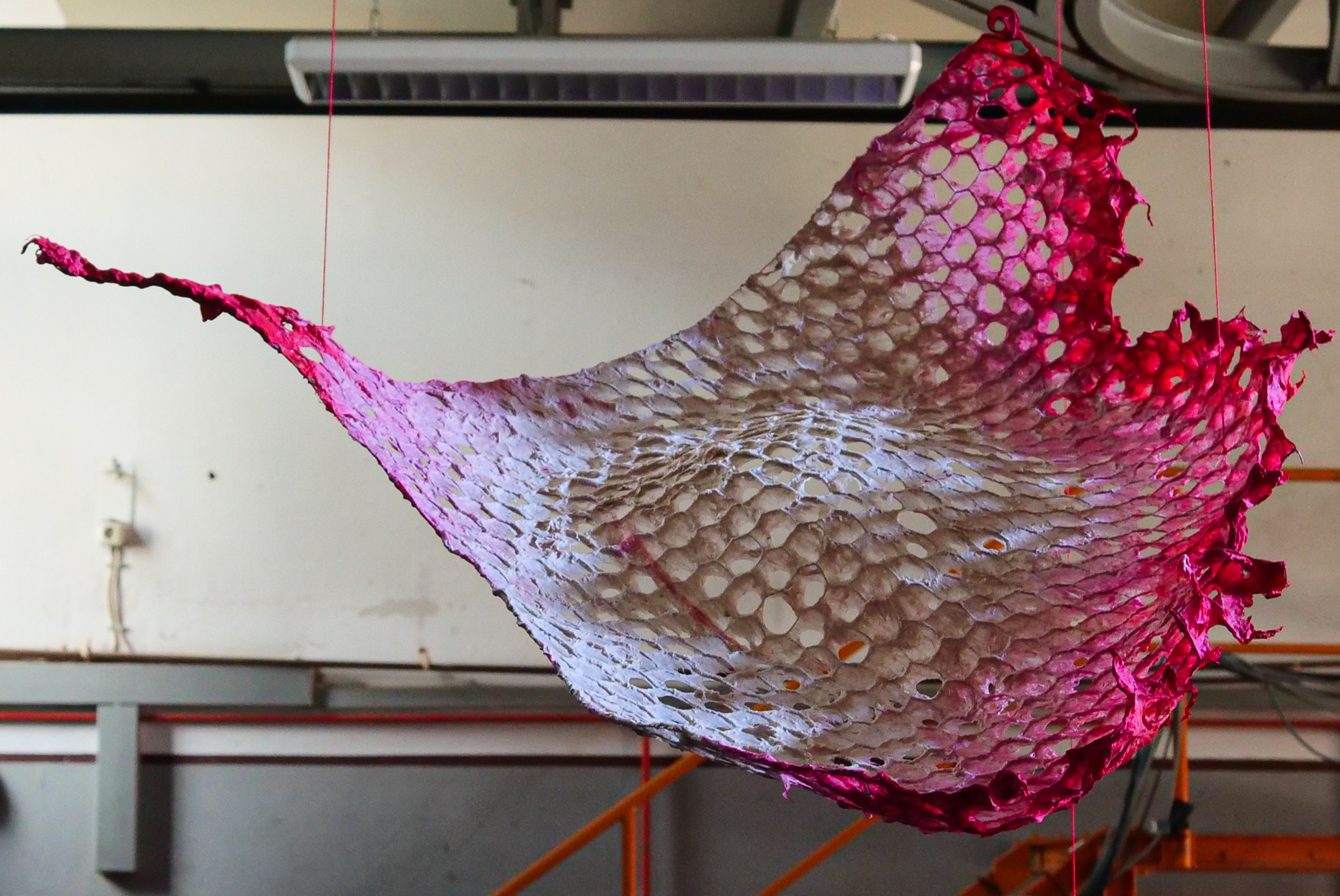
Frühlingsglaube roughly translates to a belief or hope felt as a result of spring. The title is from a romantic Friedrich Uhland poem of the same name, describing the fleeting beauty of spring and the hope that springs from the changing of the seasons. The spring of 2021 was an opening up of human activity after long lockdowns and pandemic restrictions. The beauty of blossoming trees is ephemeral and is all the more beautiful for its fleeting nature. The long dark pandemic winter and the overarching sense of doom led to all the more precious awakening. The use of red and abstract petal or wing forms as installed in a former slaughterhouse visually connects to flayed skin, bloody edges, as well as organic floral edges as found on a crepe myrtle or a linden tree. Caught in suspended animation, Frühlingsglaube captures the moment of transformation from life to death.
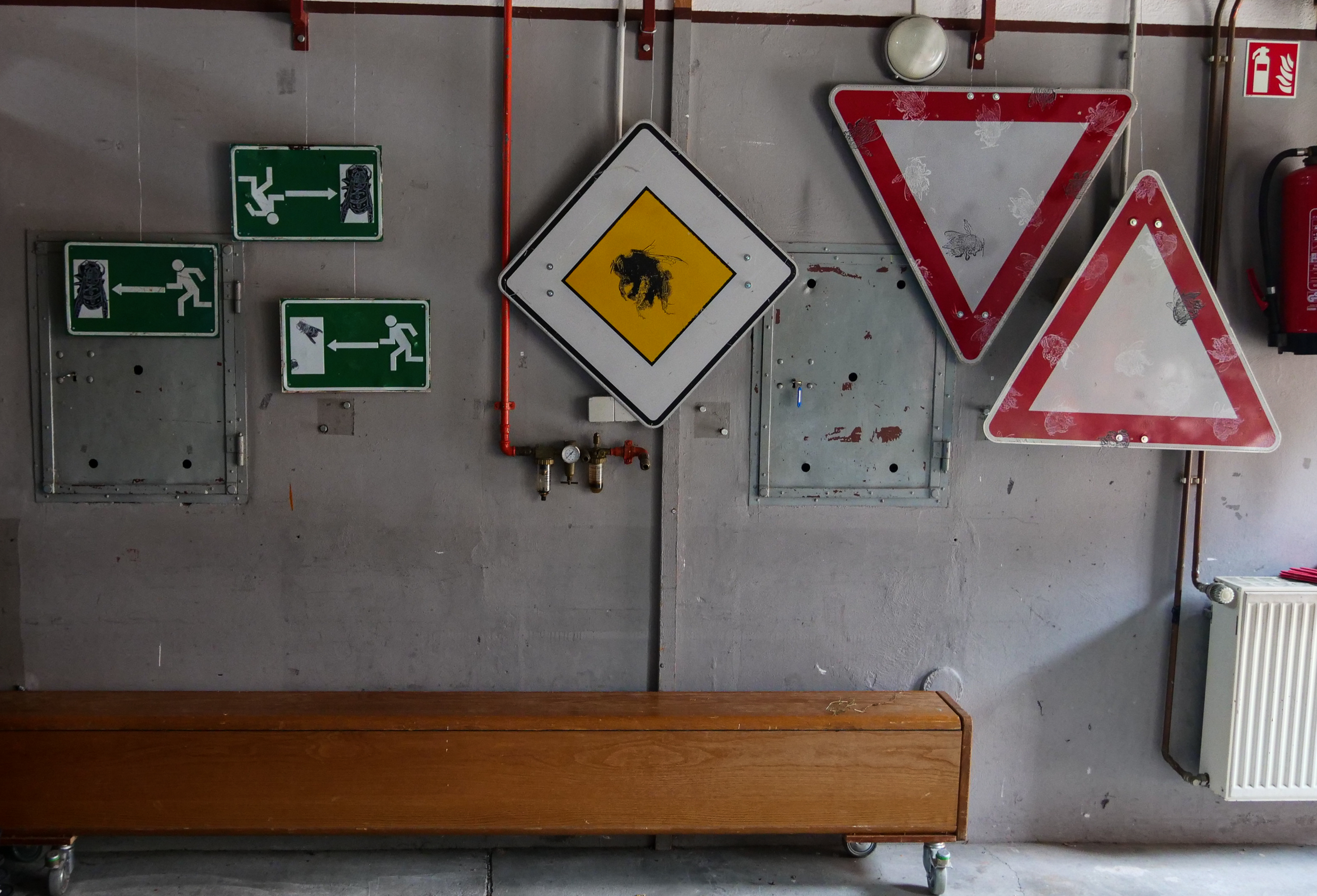


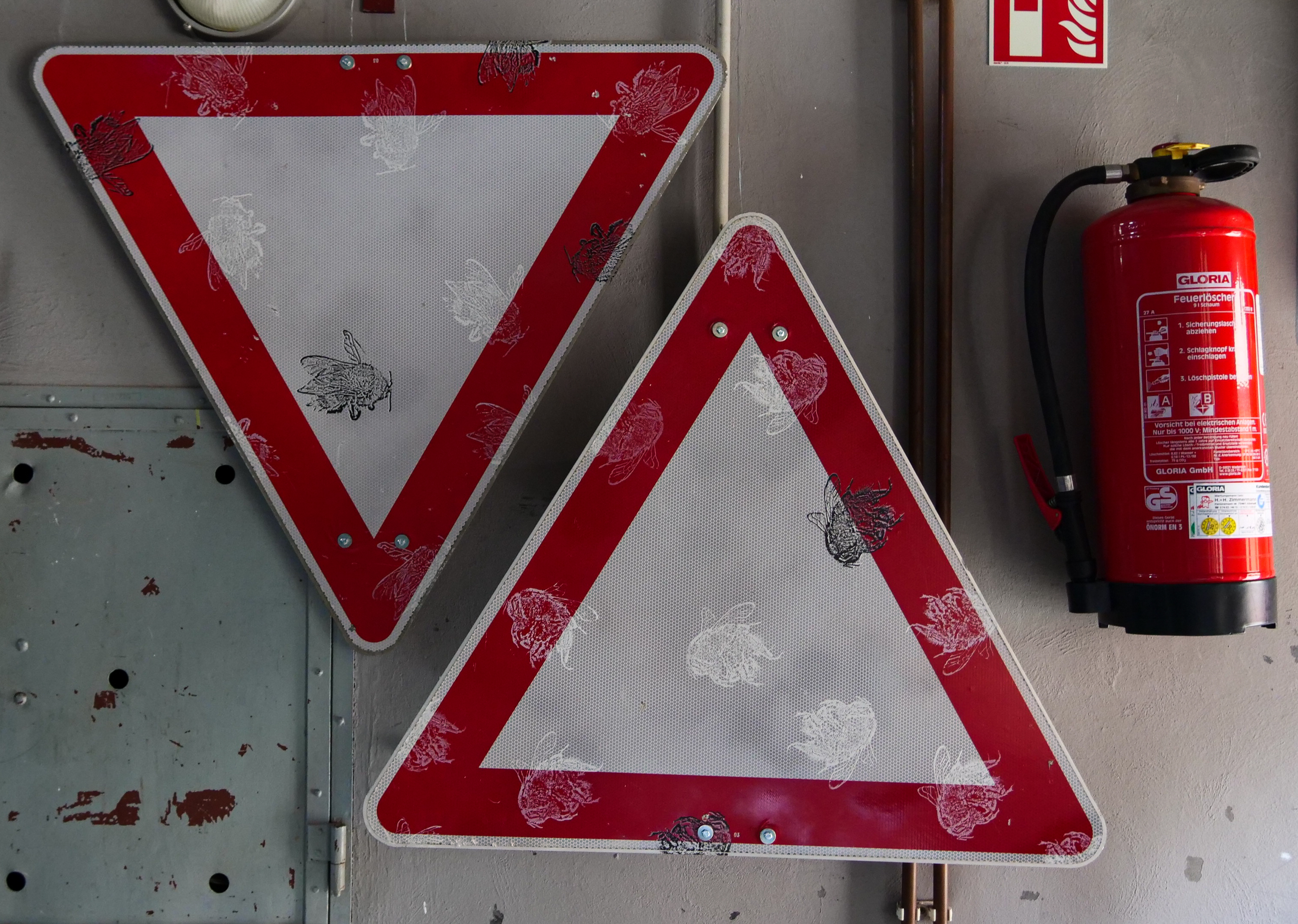
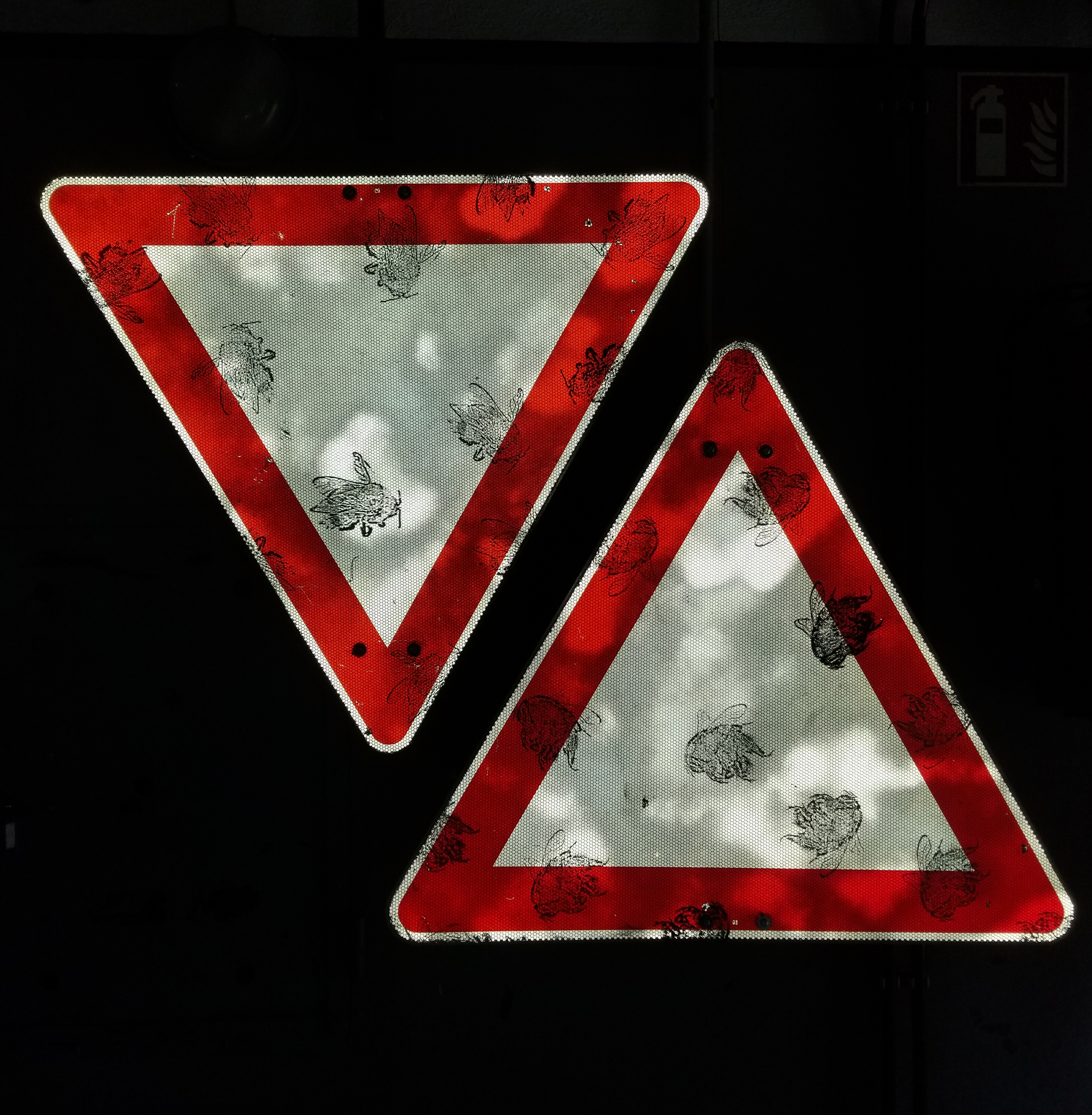













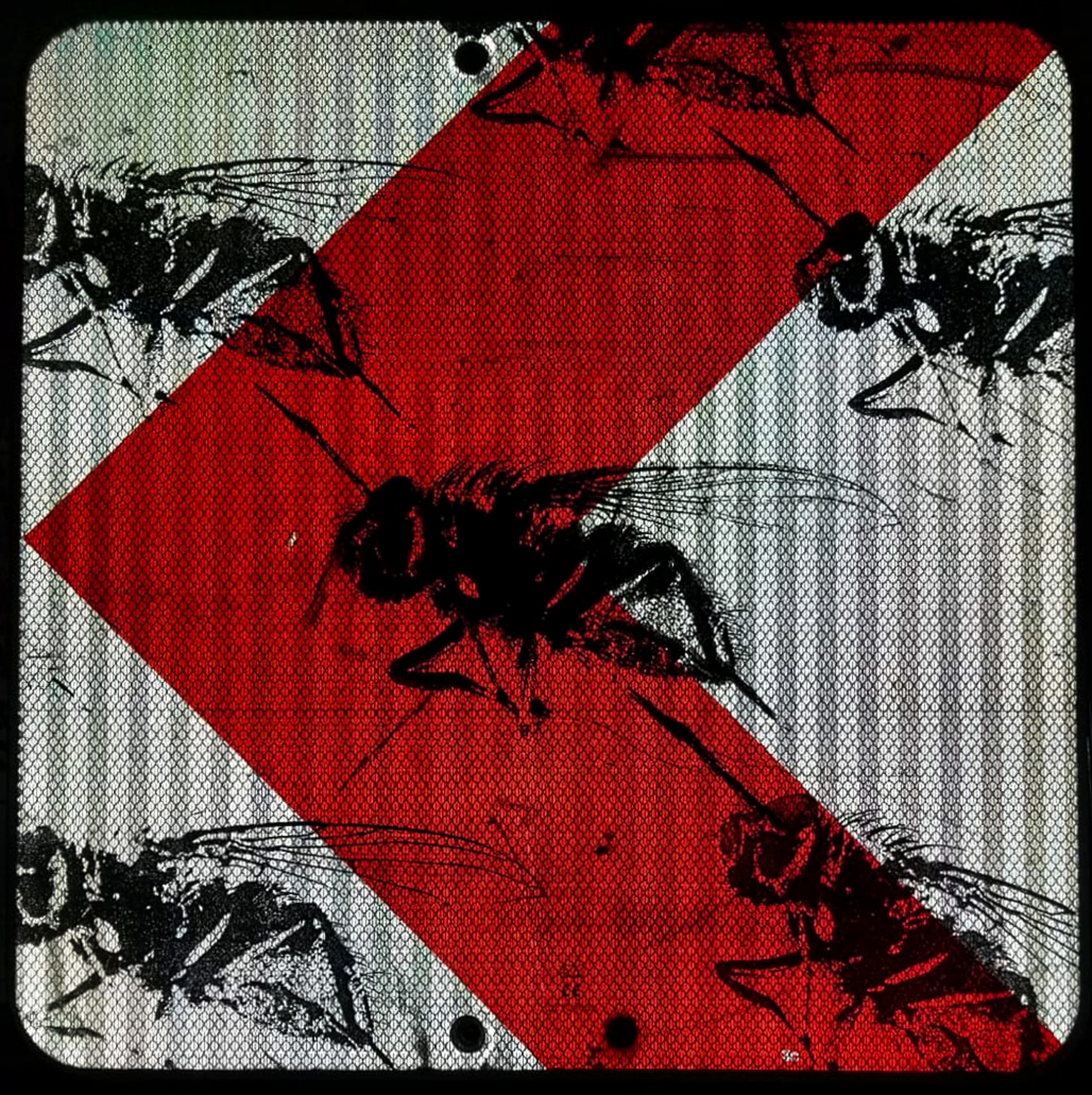

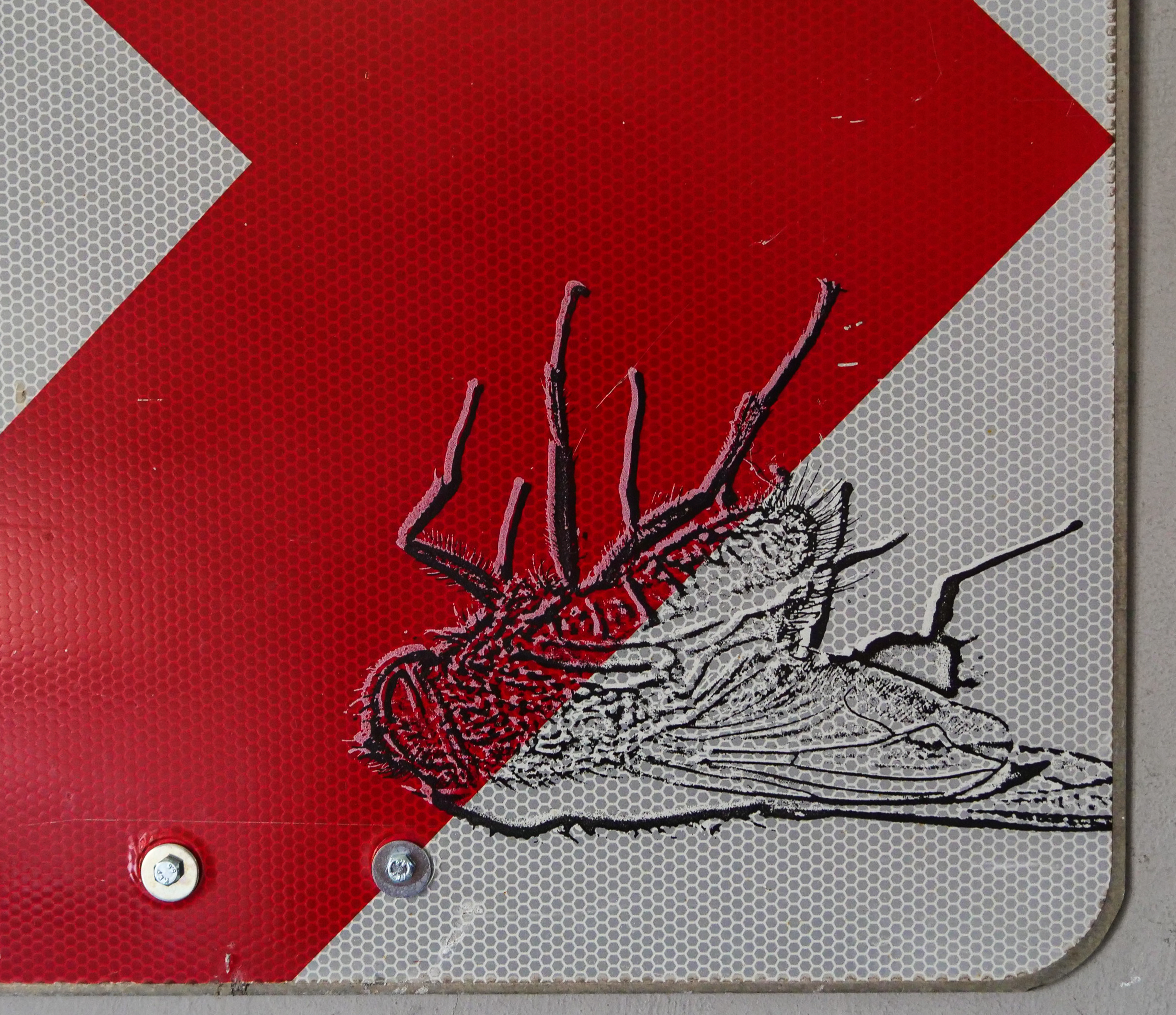
Macro lens photos of insects collected from the Schlachthof buildings are edited and simplified for screenprinting. As they are printed in white and black on reflective signs, flash photography alters their appearance making white ink black in the photo. Scaling up the insects from tiny flies, bees, or wasps, makes visible the hidden behaviour and insect life that awakens in the spring and signals change. The use of street signs draws viewers’ attention to the activity around them and combines industrial human activity with the smallest creatures that share the planet alongside us. Some of the insects appear dead while others are active in flight. Signals is a wake up call that our actions impact more than humans on our shared planet.
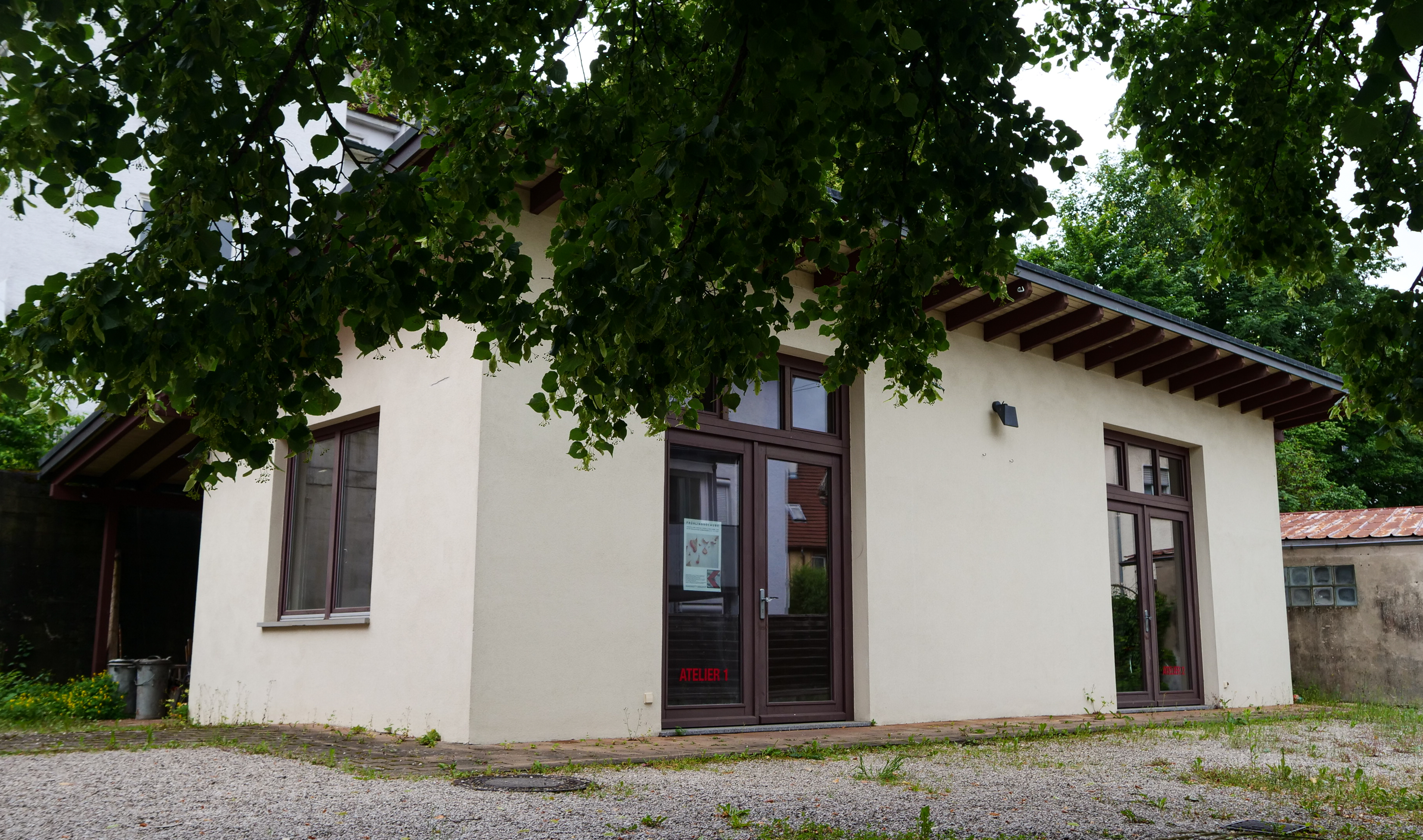


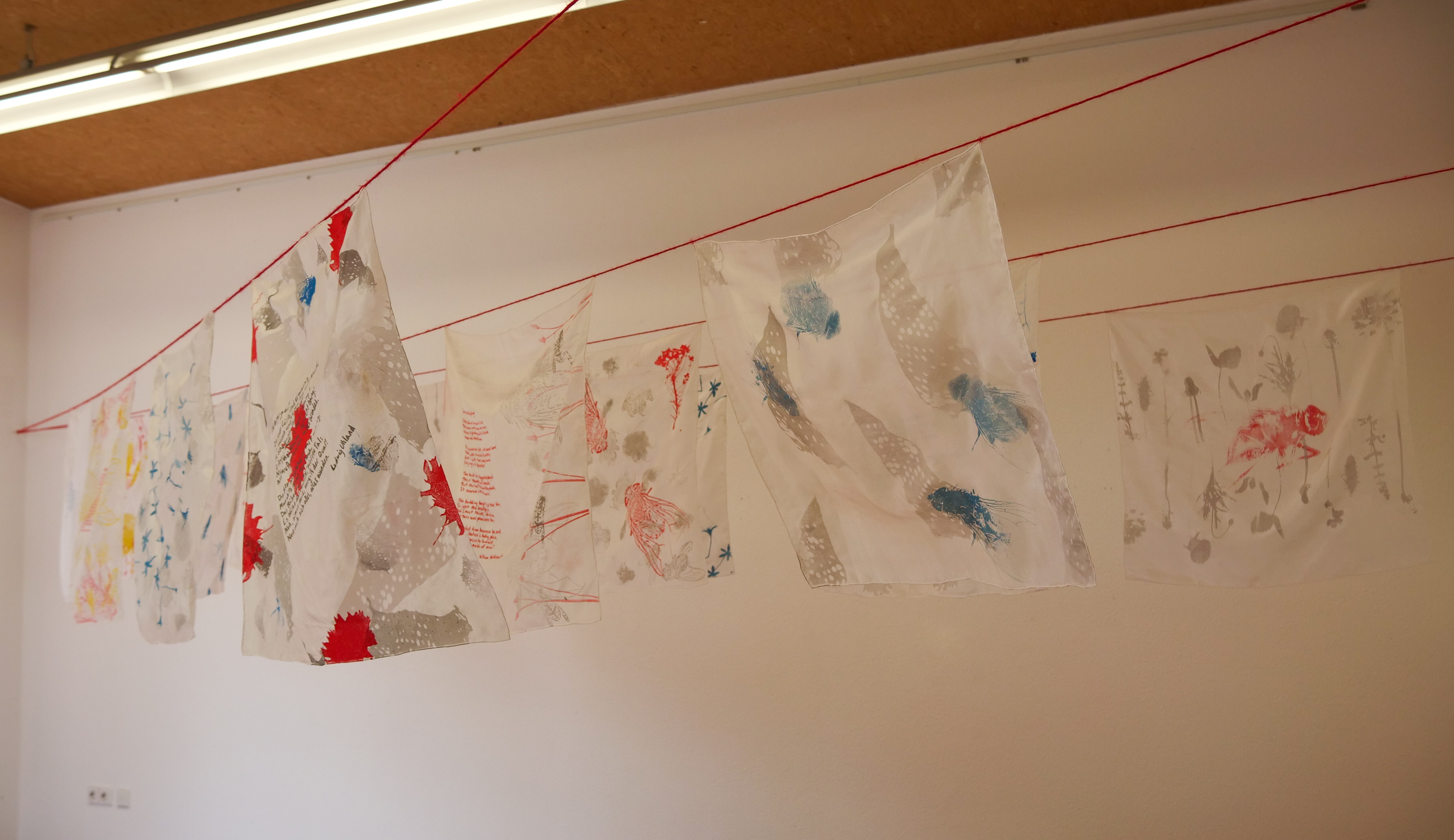
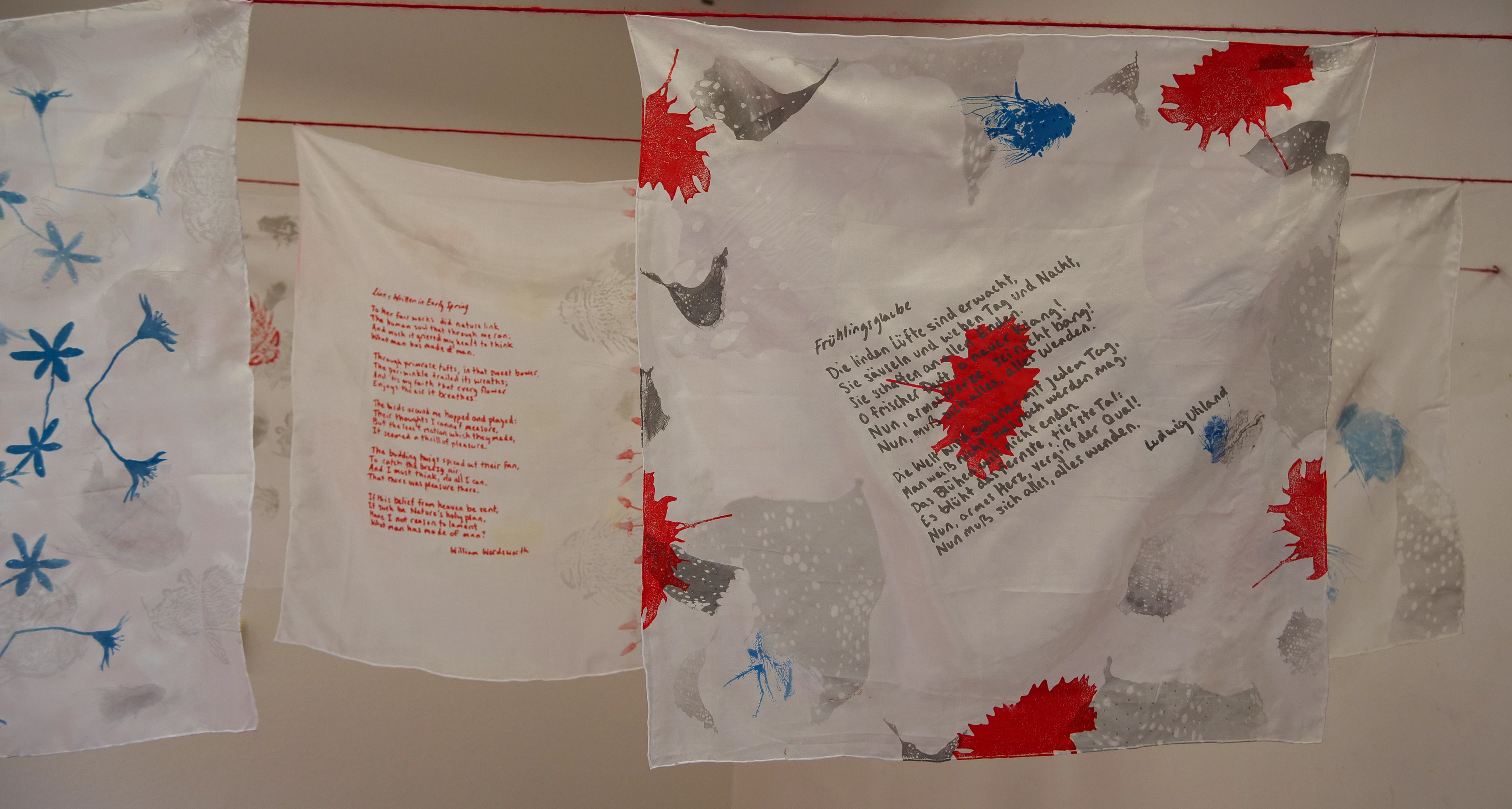
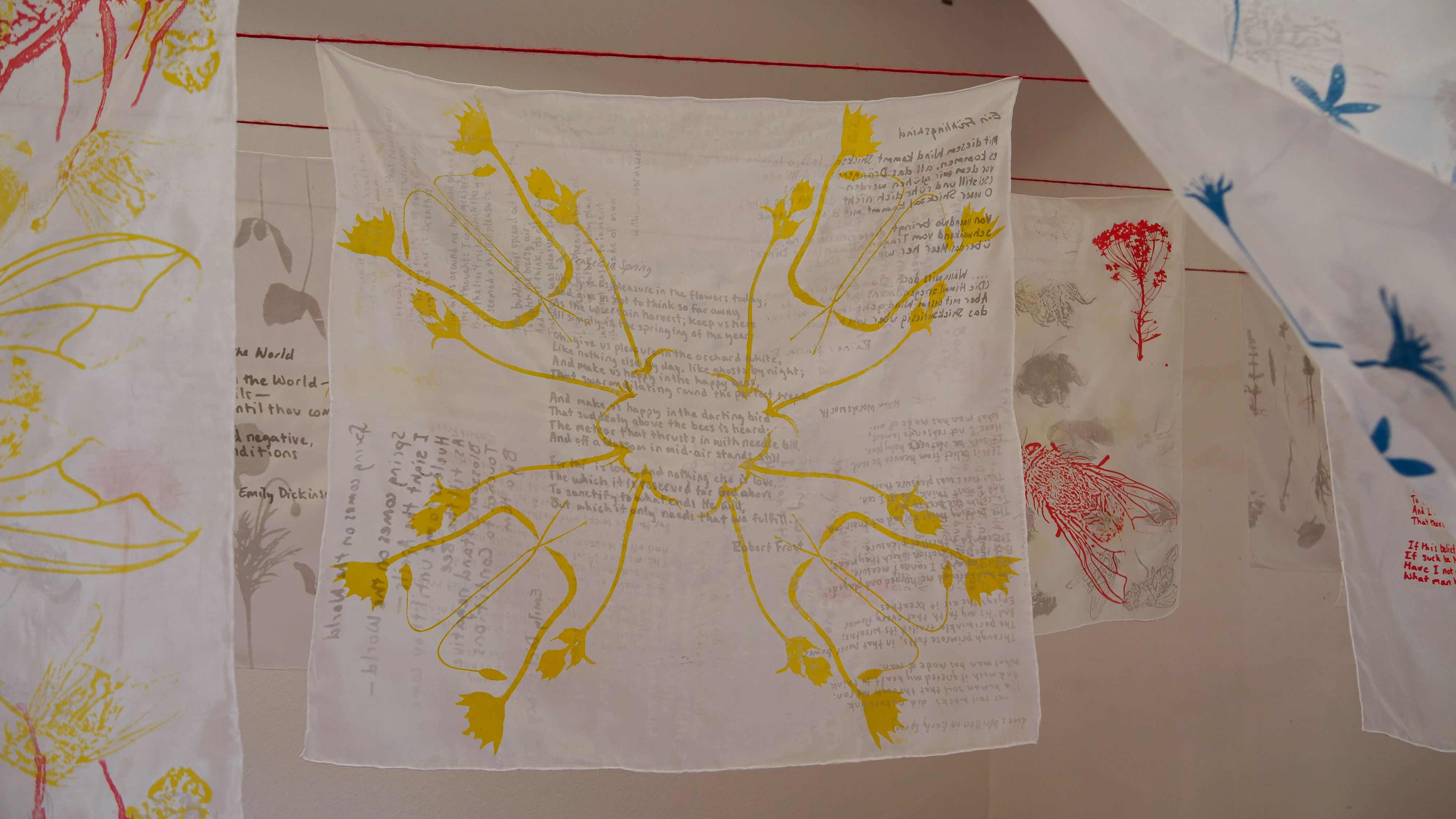




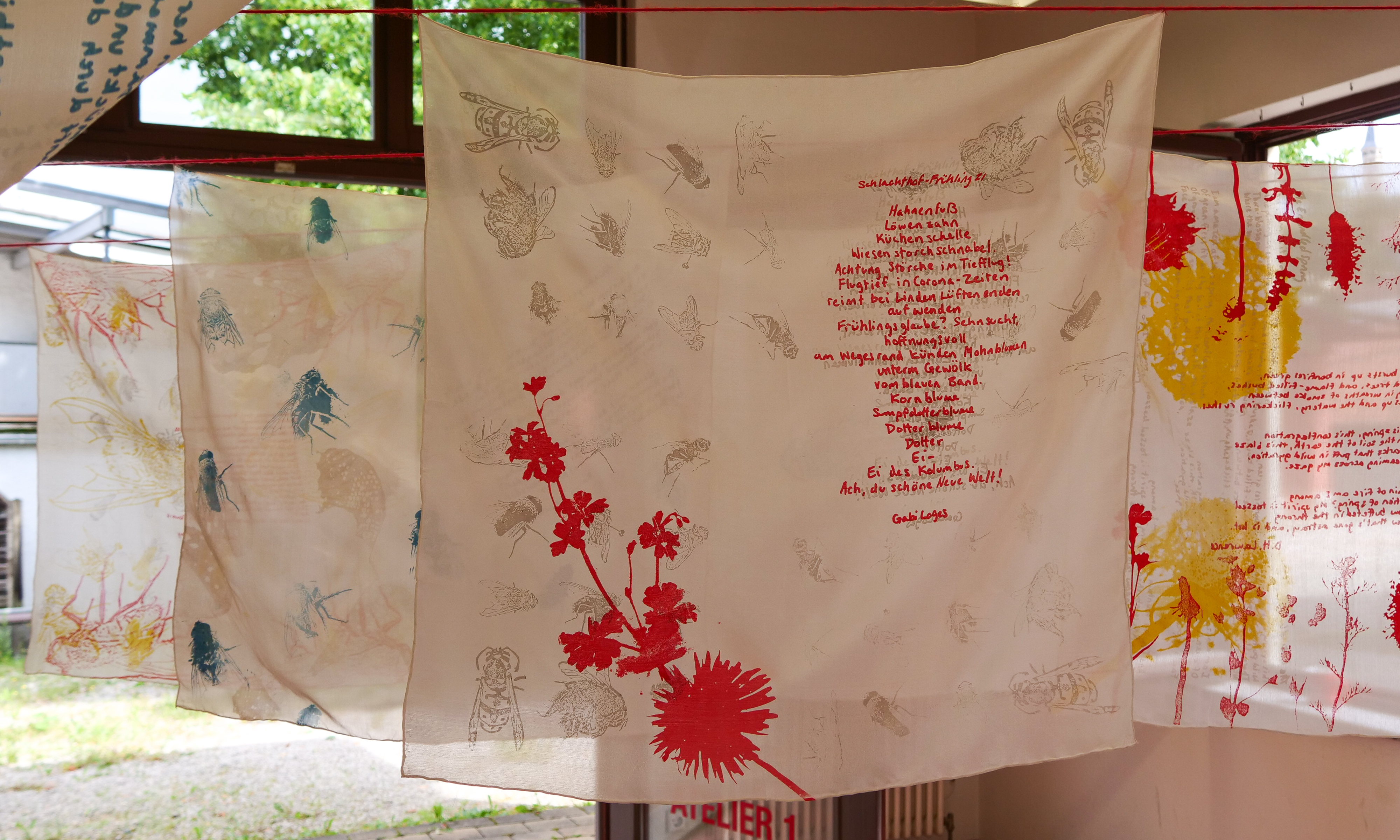



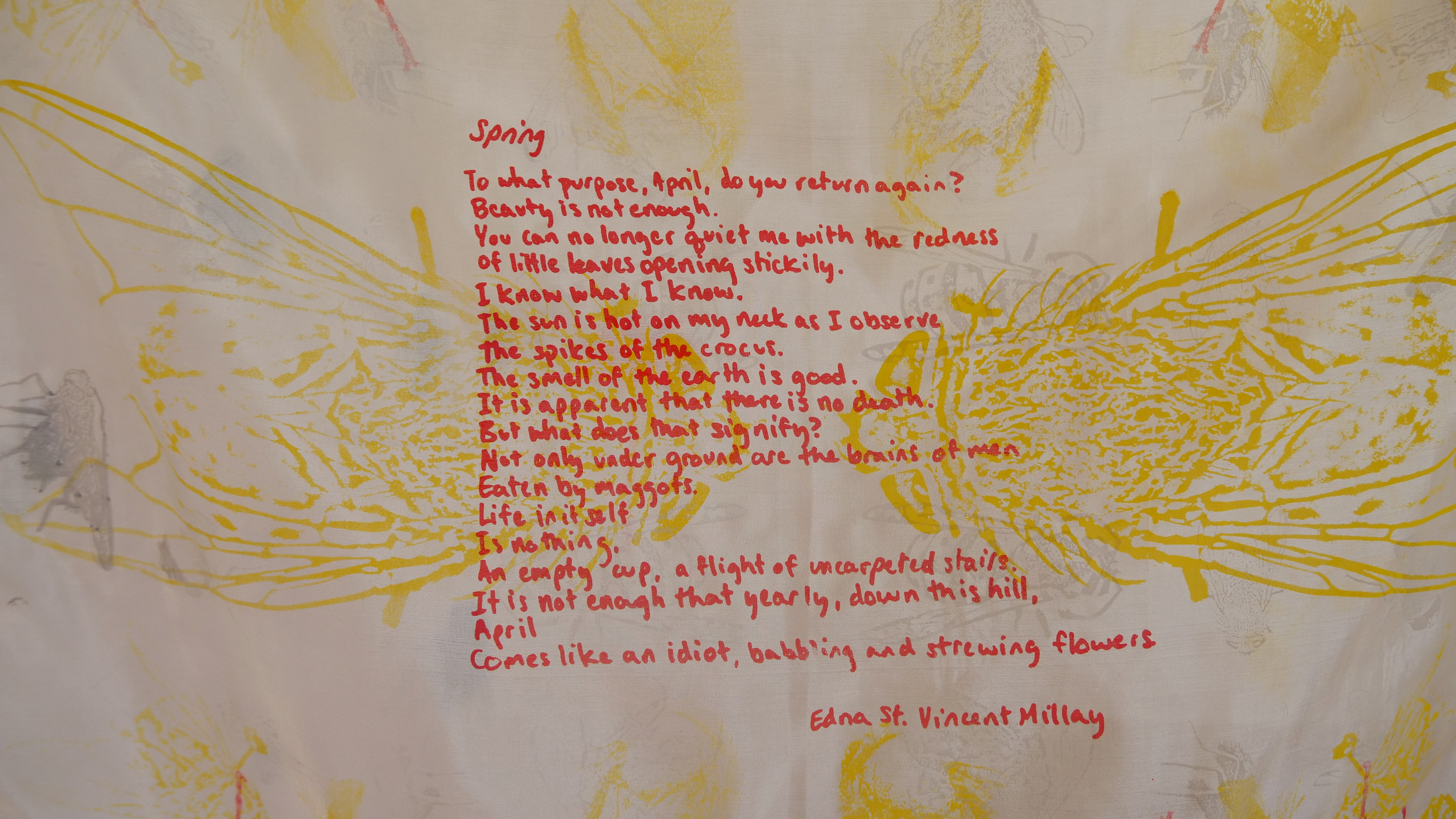
Selected poems by romantic writers who lived in the Donautal (the same area as the Schlachthof) and English language writers on the topic of spring are combined with flowers and imagery from the other pieces in the exhibition using silkscreening. The consistent topic of spring connects through all the poems, some more laudatory and others critical. The insects reappear in repeatead patterns. The colors connect to the sign colors seen in Signals. Displayed in a ray of clothesline, the handkerchiefs flutter in the breeze and are transparent front to back and visible through one another. Connected through a similar theme, the floral imagery is made from capturing the shadows of the flowers around Sigmaringen and edited to be mirrors or silhouettes.


